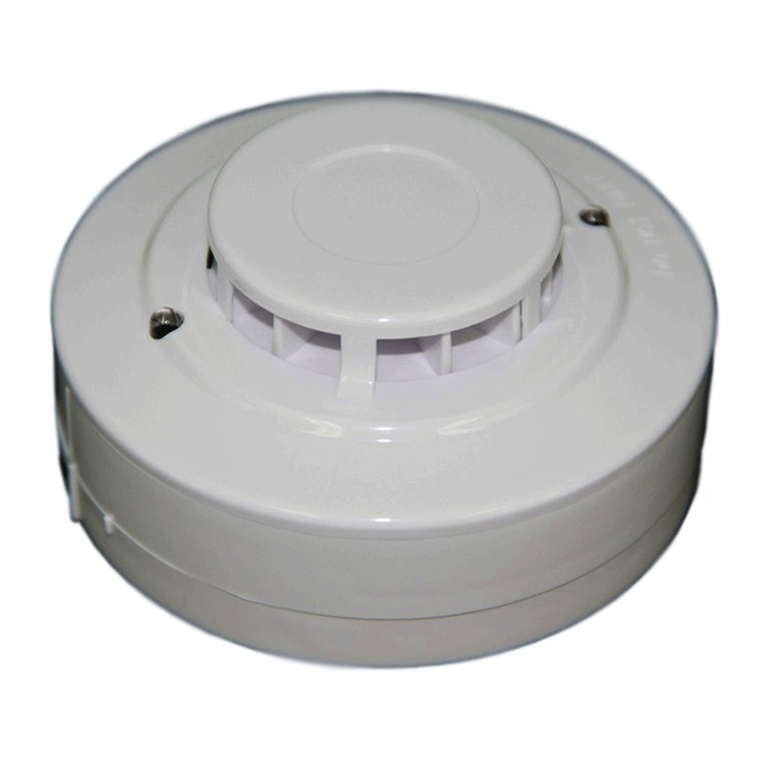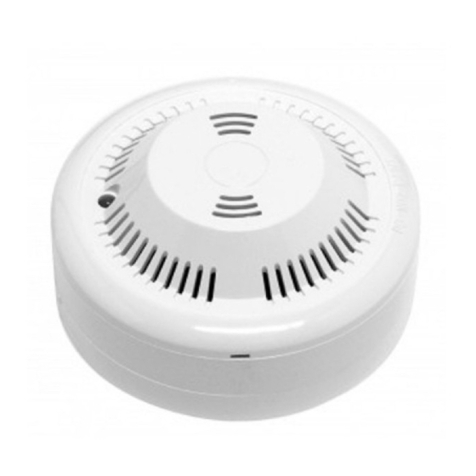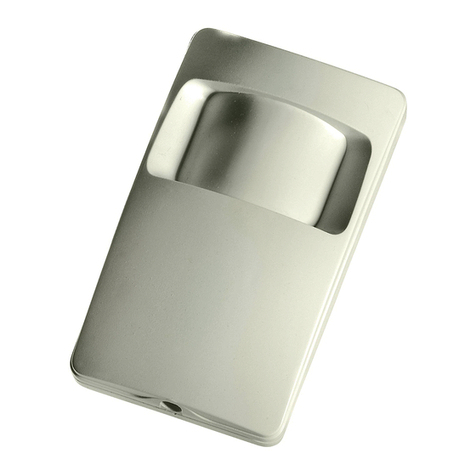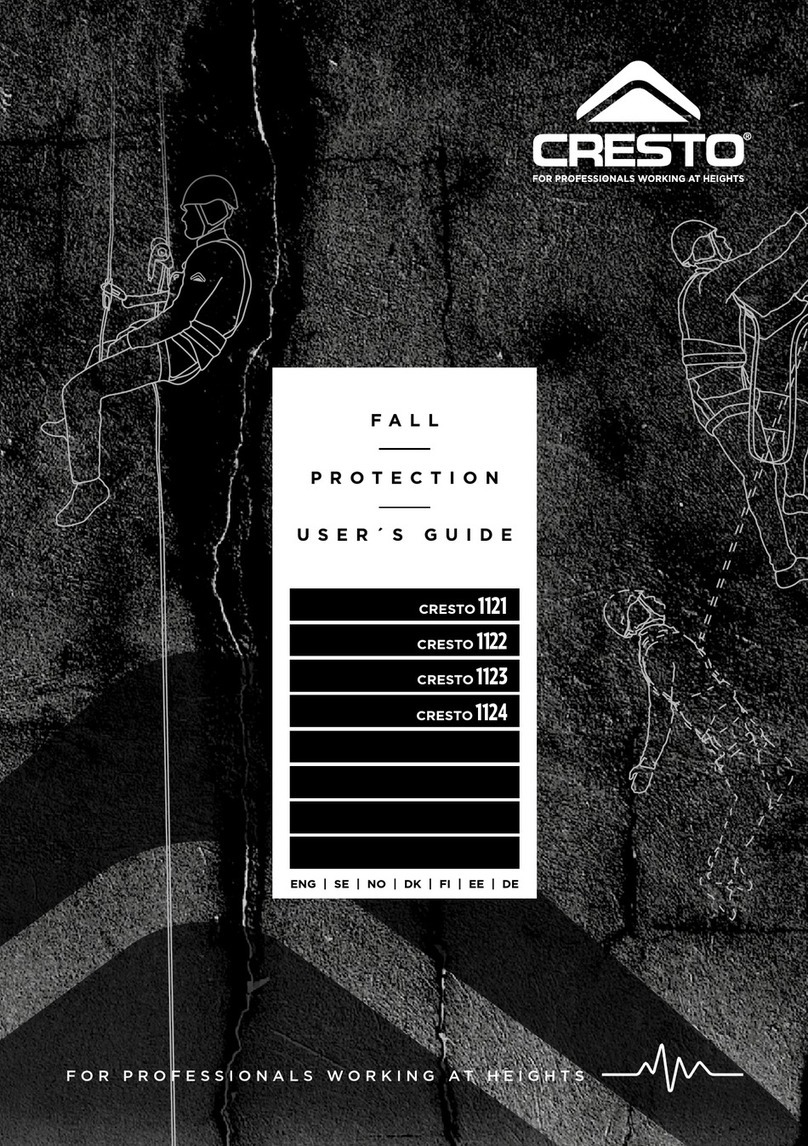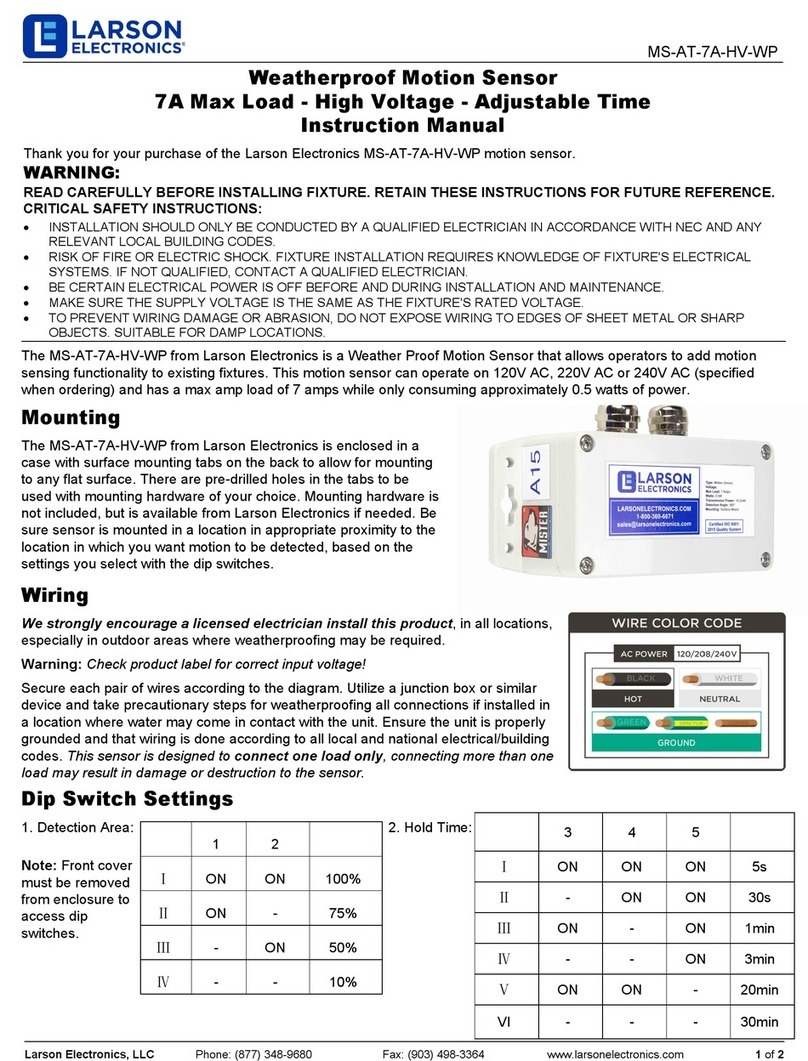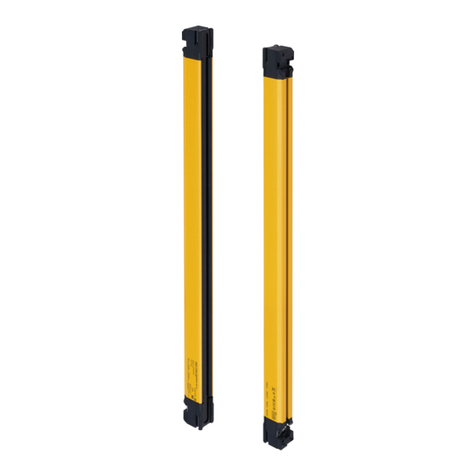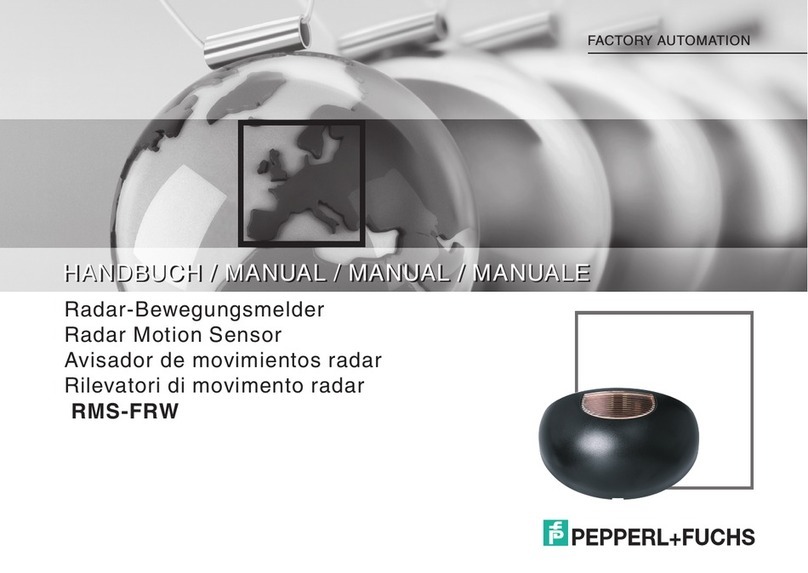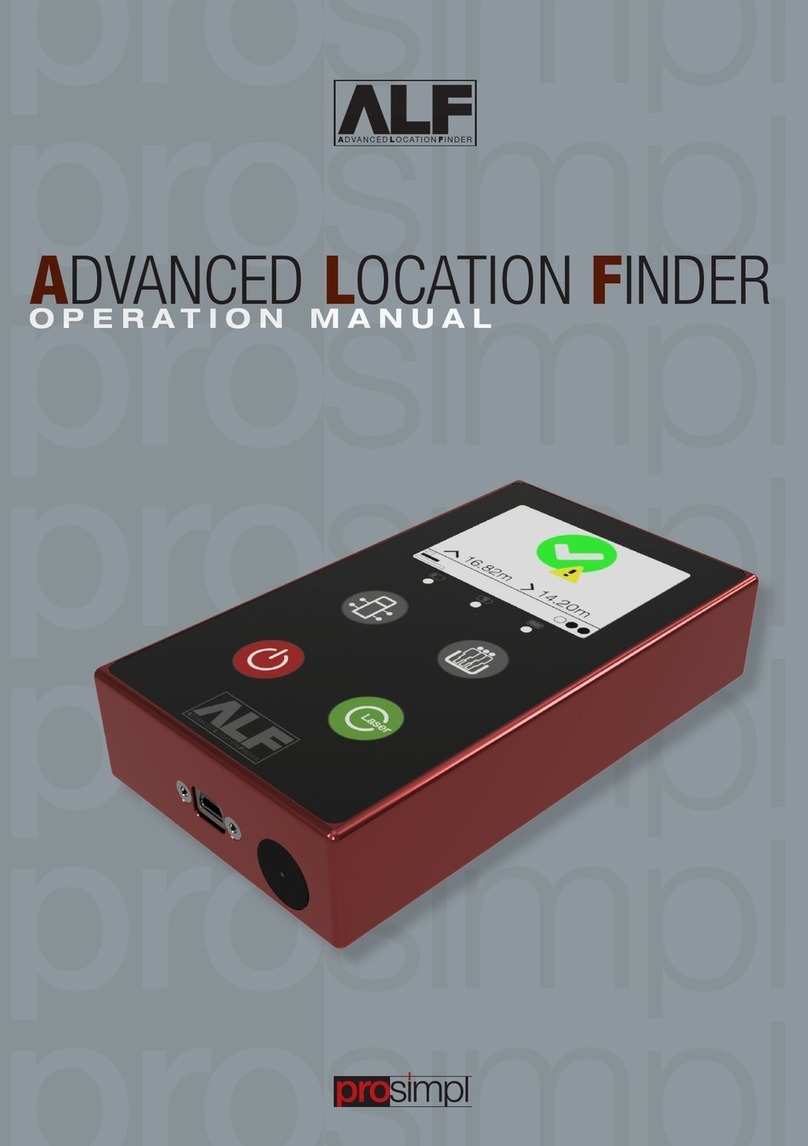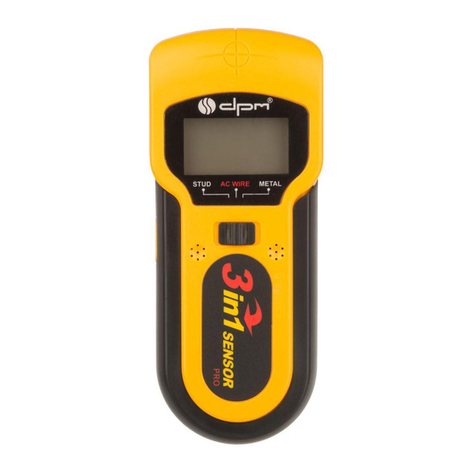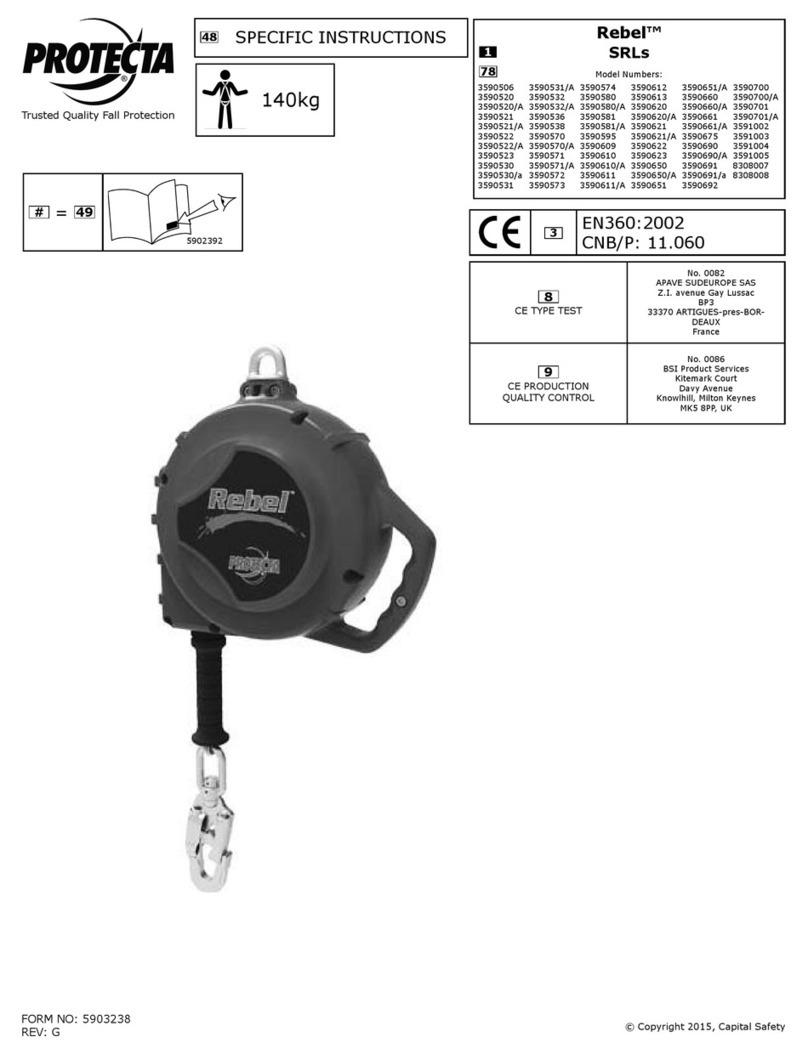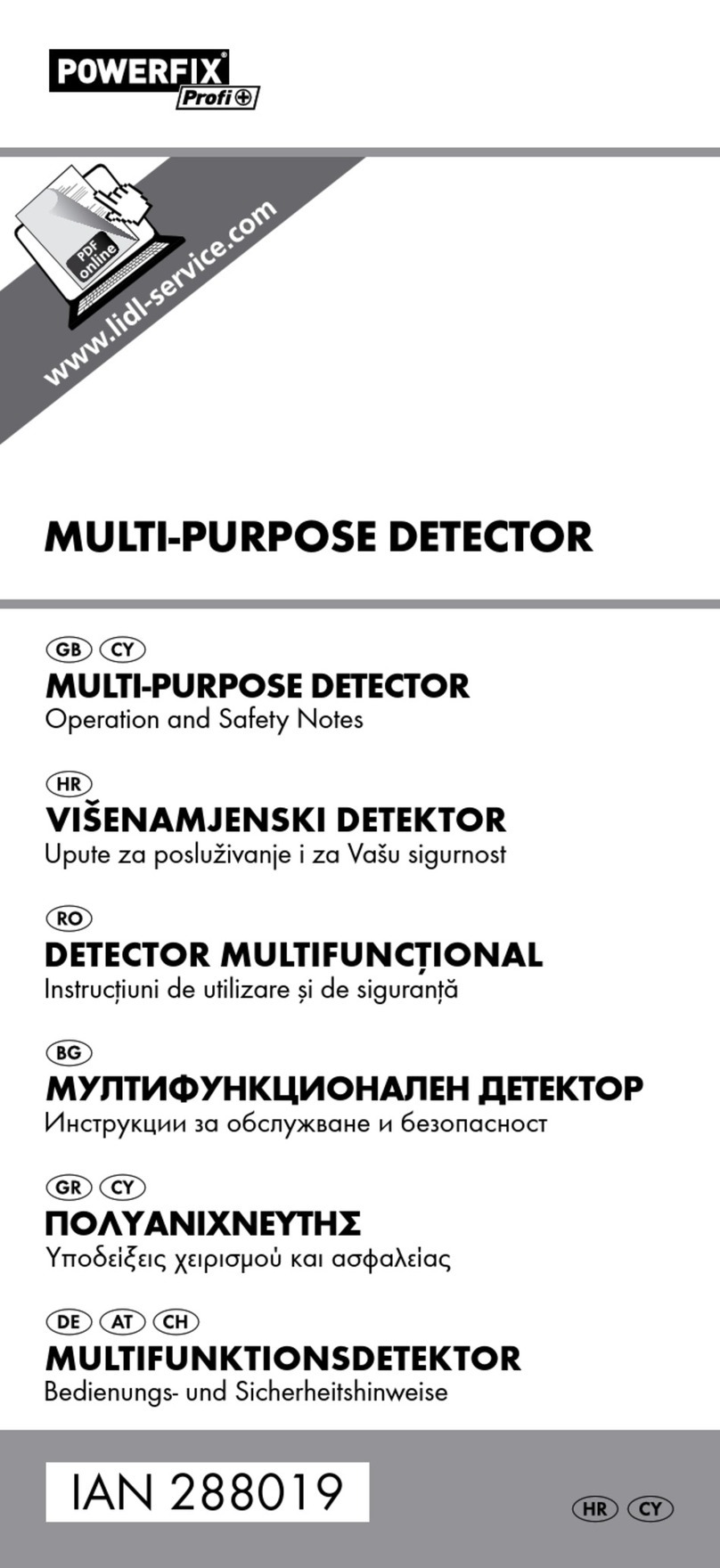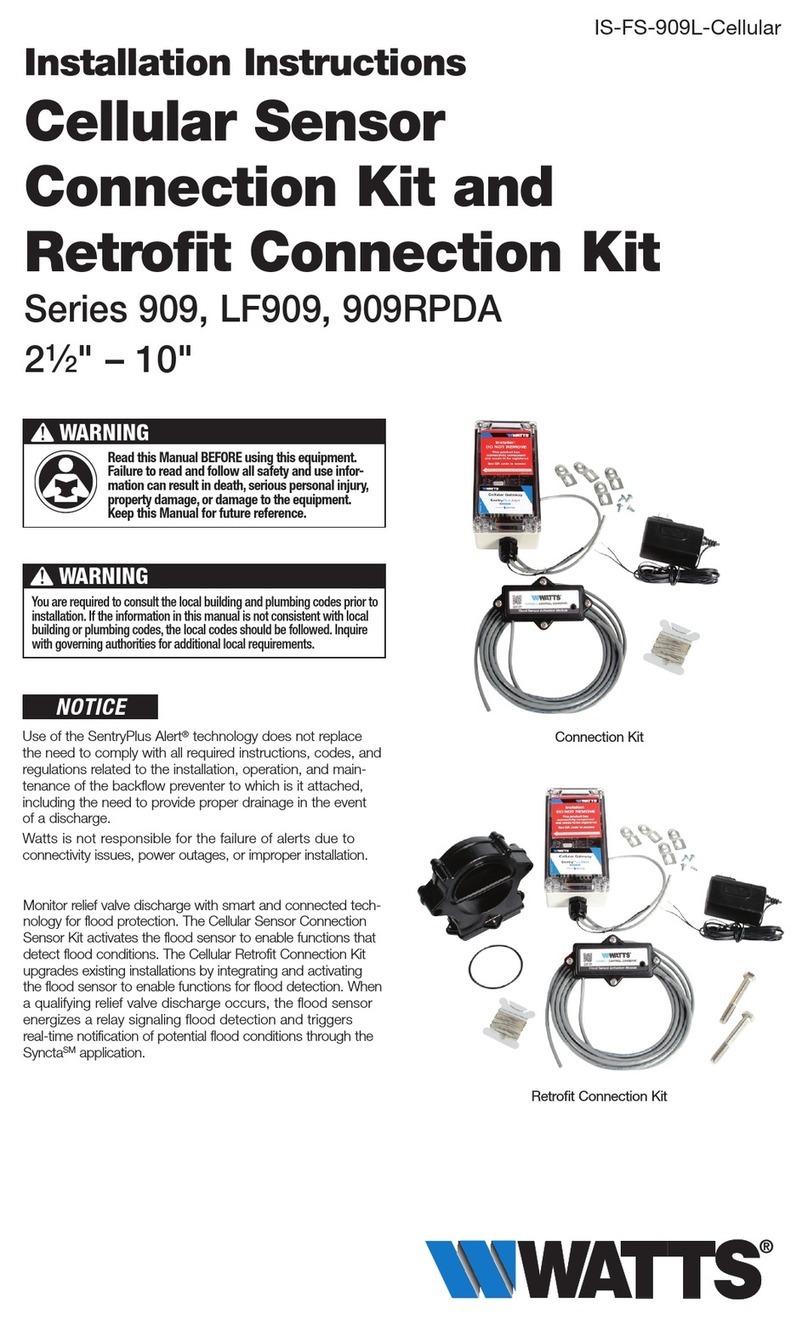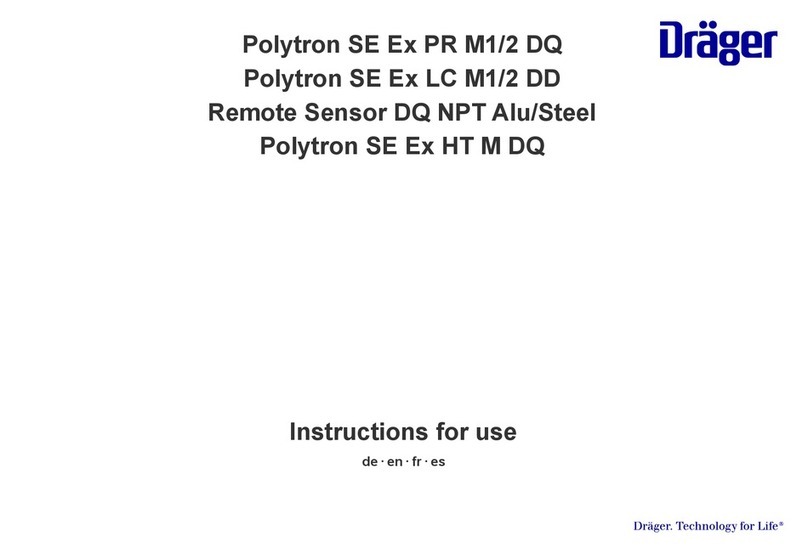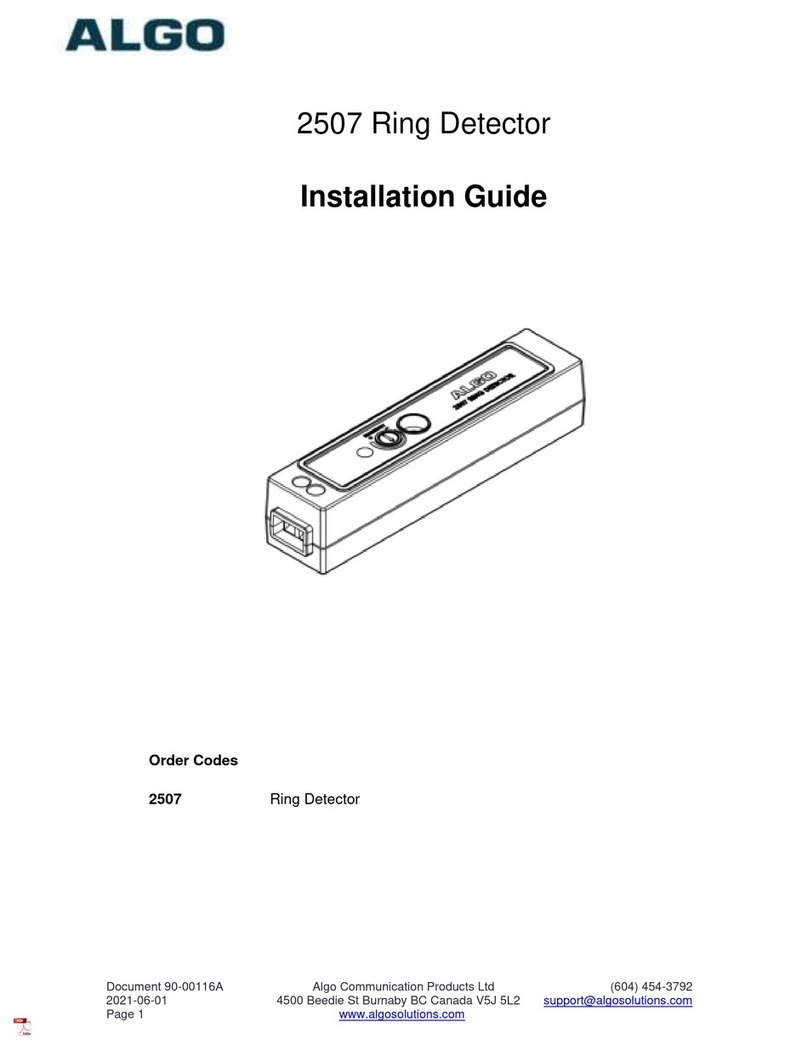Sentek HD 912 Series Quick start guide

HD 912 Rate of Rise with Fixed Temperature Detector
Installation Wiring Diagram
Before Installing
The heat detector must be installed in compliance with
the control panel manual and meet the requirements of
NFPA.
TYPICAL WIRING DIAGRAM
Figure 1(a) shows the typical wiring diagram of the
2-wire heat detector system.
INITIATING
LOOP
EN54 LISTED
COMPATIBLE
CONTROL
PANEL
+
-
FIRST DETECTOR BASE LAST DETECTOR BASE
EOL
RESISTOR
5
252
61 34 61 34
+-+
REMOTE
INDICATOR
CLASS A OPTIONAL WIRING
N
O
TE: IF REM
O
TE INDI
C
AT
O
R I
S
N
O
T
US
ED. P
O
LARITY T
O
DETE
C
T
O
R MAY BE REVER
S
ED.
-
DO NOT PLACE LINKS BETWEEN THE WIRING POSITIONS
OF TERMINALS 2 AND 5 TO PROVIDE POWER
SUPERVISION
Figure 1(b) shows the typical wiring diagram of the
4-wire heat detector system.
DO NOT PLACE LINKS BETWEEN THE WIRING POSITIONS
OF TERMINALS 2 AND 5 TO PROVIDE POWER
SUPERVISION
WARNING
TO PREVENT DETECTOR CONTAMINATION AND
SUBSEQUENT WARRANTY CANCELLATION, THE HEAT
DETECTOR MUST REMAIN COVERED UNTIL THE AREA
IS CLEAN AND DUST FREE.
INSTALLING THE BASE
1. The detector must be installed in compliance with the
control panel manual and meet the requirements of
NFPA 72.
1. To insure proper installation of the detector head to the
base, all the wires should be properly addressed at
installation:
(A) Position all the wires flat against terminals.
(B) Fasten the wires away from connector terminals.
2. If you use a jumper wire to connect the poles of
terminal 2 and 5 when testing the detector loop
continuity, be sure to remove the jumper wire prior to
the installation of the detector head.
3. The end-of-line device shown in fig. 1(a) and 1(b)
should be compatible with the control unit. The
end-of-line supervisory relay used should be rated for
the DC power voltage used.
4. Open area heat detectors are intended for mounting
on a ceiling or a wall in accordance with the fire
standard in your country.
5. The base of the heat detector can be mounted directly
onto an electrical junction box such as an octagonal
(75mm, 90mm or 100mm), a round (75mm), or a
square (100mm) box without using any type of
mechanical adapter.
INSTALLING THE HEAD
1. Align the components as shown in Figure 2.
2. Mate the detector head onto the base and twist
clockwise to secure it.
3.The maximum numbers of heat detector allowed to
connected to each initiating device circuit of the control
unit are 30 units.
Fig. 2 mating detector head onto base
TESTING
1.All the alarm signal services, releasing device and
extinguisher system should be disengaged during the
test period and must be re-engaged immediately at the
conclusion of testing.
2. After energizing the detector head for approximately
30 seconds, check to see the indicator red LED
flashing once every 1-3 seconds. If red LED fails to
flash, it indicates the non-functioning of the detector or
faulty wiring. Re-check the wiring or replace the
detector if necessary.
3. The detector to be tested should be subject to a flow of
warm air at a temperature of between 56°C and 80°C.
(This requirement can be met by some domestic hair
dryers).
Proceed as follows:
(1). Switch on the warm airflow and check that
temperature is correct and stable.
(2). From a distance of several inches, direct the
airflow at the guard protecting the thermistor. The
detector should alarm within 30 seconds.
(3). Upon alarm immediately remove the heat source
and check that the red LED of the detector is
illuminated. Reset the detector from the control
panel.
(4). If detector fails to go into alarm mode within 30
seconds it is too insensitive and needs to be
returned to the distributor for servicing.
(5). After testing, check that the system is set for
normal operation and notify the appropriate
authorities that the testing operation is complete
and the system is active again.
Fi
g
.1.b. Installin
g
the 4-wire heat detector base
Fi
g
.1.a. Installin
g
the 2-wire heat detector base

zCAUTIONS
This heat detector is particularly designed to initiate and
activate emergency action, but will do so only when it is
used in conjunction with an authorized fire alarm system.
This detector must be installed in accordance with NFPA
Standard 72.
The purpose of design of heat detectors is meant to
protect property, not life. The heat detectors do not provide
early warning of fire and cannot detect smoke, gas,
combustion particles, or flame. They will alarm when
temperature at the heat detector reach 57oC (135oF) or
above. Given the rapid growth of certain types of fires, heat
detectors cannot be expected to provide adequate warning
of fires resulting from smoking in bed, inadequate fire
protection practices, violent explosions, escaping gas, and
improper storage of flammable liquids like cleaning solvents,
other safety hazards, or arson.
Heat detectors do not always detect all fires because the
fire may be a slow-smoldering, low-heat type (producing
smoke), or because they may not be mean where the fire
occurs, or because the heat of the fire may bypass them.
Heat detectors will not detect smoke, gas, flames, or
combustion particles.
Heat detectors are components in professionally installed fire
alarm systems. They will not function if they have been
improperly wired into the fire alarm system or if power to
them is disconnected for any reason.
Heat detectors cannon last forever. They should be tested
and maintained following the instructions in this manual. To
be safe, they should be replaced after they have been
installed for ten years.
Refer to NFPA 72 for application.
Maintenance
At least once every 12 months remove the detector for close
inspection and, if found to be necessary cleaning, clean the
detector more frequently if environment contains appreciable
sources dirt or corrosive agents.
IMPORTANT: Before removing a detector for maintenance,
notify the appropriate authorities that fire alarm system or a
specific zone of the system will be temporarily out of service.
Disable the zone or system undergoing maintenance to prevent
unwanted alarms.
To maintain a heat detector the following steps can be
applied:
1. Remove the detector head from its base.
2. Do not damage the heat sensor for the heat detector
models.
3. Check that thermistor bead is free from dirt or dust, if
necessary; gently wipe it with a clean tissue paper.
4. After cleaning the detector, be sure not to tangle the
leads of thermistor.
5. Check thermistor head in standing upright in the
center of its plastic protective guard.
6. Install the detector into its base again.
7. Test the operation of the heat detector.
8. Enable the zone or system again and notify the
appropriate authorities that the maintenance
operation is complete and the system is active again.
9. Enable the zone or system again and notify the
appropriate authorities that the maintenance
operation is complete and the system is active again.
Heat detectors are designed to be as maintenance-free as
possible. However, dirt or corrosive agents can accumulate
inside a detector’s sensing head and influence its sensitivity.
They could reduce the amount of warning time given in case
of a fire. Therefore, detectors should be tested periodically
and maintained at regular intervals. Follow closely the
manufacturer’s recommended procedures for maintenance
and testing and refer to the NFPA 72.
REFER TO THE TECHNICAL BULTTIN ISSUE NO. STHD20080508S1,
REV.E, May 08, 2008.
SPECIFICATION
Model 2/4
wire Voltage
DC
Standby
Current
(Max)
Alarm
Current
(Min /Max)
Surge
Current
(Max)
Frequency
Temperature
Rating
Rate of Rise of
Temperature
(Max)
UL Maximum
Spacing
(10-foot ceiling)
Alarm
Impedance
(Min/Max)
Alarm
Contact
Base
Model
HD 912-2 2 10.8~33V 180μA 18/80mA 180μA 1-3 Seconds 135 ℉/57 ℃ 15 ℉/8.3 ℃ 40-feet x40-feet 411Ω/594Ω- P/N852001
HD 912-2L 2 10.8~33V 180μA 18/80mA 180μA 1-3 Seconds 135 ℉/57 ℃ 15 ℉/8.3 ℃ 40-feet x40-feet 411Ω/594Ω- P/N854001
HD 912-4(12V) 4 12V 180μA 23/33mA 180μA 1-3 Seconds 135 ℉/57 ℃ 15 ℉/8.3 ℃ 40-feet x40-feet - Form A P/N854001
HD 912-4(24V) 4 24V 180μA 34/46mA 180μA 1-3 Seconds 135 ℉/57 ℃ 15 ℉/8.3 ℃ 40-feet x40-feet - Form A P/N854001
Remarks: L-remote LED indicator output
HDMI912080528, REV H, 05.28.2008.
LIMITED WARRANTY STATEMENT
SENTEK ELECTRONICS INC. declares that this product is free from defects in material and workmanship. And it will repair or replace
any product or part thereof which proves to be defective in workmanship or material for a period of twelve (12) months from the date of
purchase but not to exceed eighteen (18) months after shipment by the manufacturer. For a full description of SENTEK’S LIMITED
WARRANTY, which, among other things, limits the duration of warranties of merchantability and fitness for a particular purpose and
excludes liability for consequential damages. Please read the entire LIMITED WARRANTY on the SENTEK quotation. Acceptance of order
and/or original invoice which will become part of your sales agreement. Please contact SENTEK directly for a return merchandise
authorization (RMA) number before returning goods to the factory . Shipment must be prepaid and SENTEK will repair or replace your
returned detector
This manual suits for next models
3
Other Sentek Security Sensor manuals

